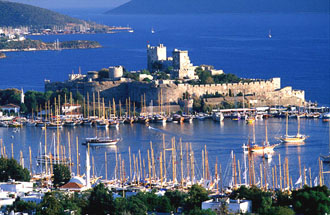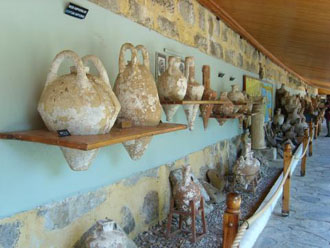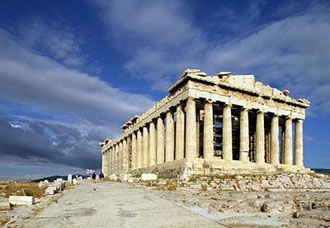Great Courses, Beautiful Beaches, Good Times!

St. Peter's Castle
Arguably Bodrum's most prominent feature, St. Peter's Castle was built by the Knights of St. John, the construction of the castle began in 1402, mostly using green volcanic stone from the Mausoleum of Halikarnassus, which had been destroyed by an earthquake. In 1409 the building of the castle became of utmost importance, and so the Papal office sent an abundance of Christians to work on the site, on the promise of a guaranteed place in heaven. Interesting!
Henrich Schlegelholf, a German architect, supervised the construction of the castle ensuring that it was up to date with regard to castle design, and that it had provisions for the latest in armouries, which, at the time, were cannons, which were accordingly installed along the top of the castle's thick walls. Many clever architectural techniques were put in place, including excavating parts of the internal walls to create small reservoirs from which the Knights could get their water when the castle was under attack.
The chapel, which still stands erected inside the castle, was one of the first structures to be completed. In its heyday St. Peter's Castle had five towers; the towers of England, France, Italy, Germany and, Spain.
Be sure to not miss the spectacular gardens which are often overlooked. The garden has a huge range of Mediterranean plants and trees, and is well worth a visit. Also in the castle is a fully-functional Turkish bath and a dungeon used by the knights, and don't forget to experience the view from the top of the castle, which is absolutely stunning.
The Bodrum Museum of Underwater Archaeology
Opening Hours: 9:00am to 12:00pm and 2:00pm to 7:00pm Tuesday to Sunday
In the 1960's, St. Peter's Castle became the official storage location of underwater findings, until somebright spark realised if the findings were displayed in a way that was pleasing to the eye, with anecdotes and information, they could charge people an entrance fee (albeit not a huge one), and call it a sightseeing attraction, genius!...
The Bodrum Museum of Underwater Archaeology's aim is to take visitors back in time to experience what ancient sailors experienced back in the day.
The artefacts included in the museum include shipwrecks which have been lovingly restored, including, amazingly, artefacts from a shipwreck from the 7th century, and half the wrecked ship, as it were, has been reconstructed. There's also a shipwreck from the 14th century - which is, unsurprisingly, one of the oldest shipwrecks in the world.
Amazingly, findings have been unearthed relatively recently; the digging to create foundations for a highway unearthed a beautifully preserved tomb, containing a princess dating from sometime around 360 - 325 BC, complete with an abundance of gold jewellery.
All in all the museum is considered to be one of the greatest museums of it's kind. Much effort has gone into bringing the relics to life, and as such it is a very interesting place to be.
The Mausoleum of Halikarnassus
The Mausoleum is a fantastic sightseeing attraction, as it's one of the Seven Wonders of the Ancient World. Originally standing at an estimated 60m high; the tomb is Mausolus's; built for him by his sister, and wife, Artemisia (it was custom for men to marry their sister's at the time, in order to protect the families assets).
Having died suddenly in 353BC, he left Artemisia devastated, so to pay her respects to him she decided no expense would be spared for his tomb, and employed Greece's finest artist to decorate it. Life size statues of lions and warriors adorned the surrounding area, creating a beautiful location for the tomb. Unfortunately, just the foundations remain, a devastating earthquake of 1308 saw most of the magnificent building fall to the ground, however many of the bricks were used to build St. Peter's Castle.
The Ottoman Tower
Built around 1794, the Ottoman Tower was designed to protect the Ottoman naval shipyard from pirates, who had a particularly inconvenient habit of raiding the shipyard for money, gold, indeed, anything they could get their hands on. The installation of the tower meant that someone could keep watch from the tower whilst the ship-builders constructed ships safely, without the threat of thieves and vandals. A recent restoration of the tower unearthed some remains of baths from the Roman times, these are worth a sightseeing trip for those interested in Turkey's cultural heritage.
The Ottoman Tower is now something of a symbol in Bodrum representing the boat-construction industry. Nowadays, the Ottoman Tower is used for exhibitions and cultural events.
The Ancient Amphitheatre (Antik Tiyatro)
Those sightseeing in Bodrum must also visit the ancient amphitheatre which is situated on a hillside just above the main Bodrum - Gumbet highway.
The ancient amphitheatre, which is effectively cut into the hillside, in Bodrum has been impressively restored, and is used on a number of occasions, including the music and arts festival in September.
The amphitheatre has the main components of any amphitheatre - a semi-circle shaped seating area for the audience, space in front of the audience for the orchestra, and of course, a stage. It originally seated 13,000 people, although the capacity currently isn't more than 7,000. The amphitheatre offers fantastic views of Bodrum city and the harbour, and is worth a sightseeing trip for this reason alone.
The Myndos Gate
Located just off the 'Old Gumbet Road', the Myndos Gate was the entrance to Halicarnassos when the impressive city walls were still standing. With the support of Ericsson and Turkcell, the Bodrum Underwater Archeology Museum is undertaking the task of restoring the ancient city walls; the Myndos Gate and Ottoman Tower in particular, to ensure they're worth a sightseeing trip.



